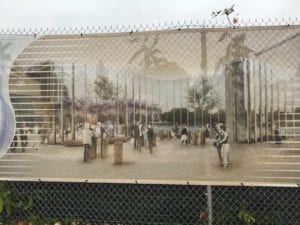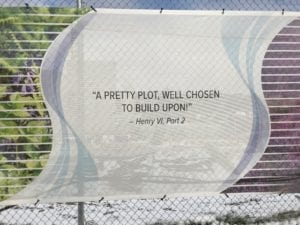Great review of Supernatural Environments in Shakespeare’s England: Spaces of Demonism, Divinity, and Drama (2014)
Previous posts related to Stratford, and other topics related to the current post, include:
To understand totalitarianism, read Aldous Huxley
Supernatural Environments in Shakespeare’s England (2014)
Recently I came across a study (Reference Only – Not Holdable) at the Toronto Public Library) entitled: Supernatural Environments in Shakespeare’s England: Spaces of Demonism, Divinity, and Drama (2014).
A blurb reads:
Bringing together recent scholarship on religion and the spatial imagination, Kristen Poole examines how changing religious beliefs and transforming conceptions of space were mutually informative in the decades around 1600. Supernatural Environments in Shakespeare’s England explores a series of cultural spaces that focused attention on interactions between the human and the demonic or divine: the deathbed, purgatory, demonic contracts and their spatial surround, Reformation cosmologies and a landscape newly subject to cartographic surveying. It examines the seemingly incongruous coexistence of traditional religious beliefs and new mathematical, geometrical ways of perceiving the environment. Arguing that the late sixteenth- and early seventeenth-century stage dramatized the phenomenological tension that resulted from this uneasy confluence, this groundbreaking study considers the complex nature of supernatural environments in Marlowe’s Doctor Faustus and Shakespeare’s Othello, Hamlet, Macbeth and The Tempest.
[End]
Online review of Supernatural Environments in Shakespeare’s England (2014)
I found an online review by Ian McAdam – at https://jps.library.utoronto.ca/index.php/eth/article/view/16642/13623 – that does a great job of setting the above-noted study into some kind of context.
An excerpt from the review reads:
One case of postmodern presumption is tackled directly in chapter one, ‘The Devil’s in the Archive: Ovidian Physics and Doctor Faustus’, which challenges our present disbelief in the satanic. My own experience in the archives first attracted me to this discussion in article form, since my impression from the proliferation of early modern printed material on witchcraft subjects, like Poole’s, was that the early modern devil has not been given his due. Anxiety about the ‘permeability’ of the body and the self to satanic influence is certainly much on the minds of writers of the period. In spite of this context I continue to suspect — and no doubt this is an expression of my own critical hubris — that early modern playwrights constitute a remarkably skeptical subset of early modern writers.
[End of excerpt]
Commentary
I like the references, in the review, to a ‘crisis of cosmic geography,’ and to the discussion concerning the distinction between imagination and reality. As well, it’s of interest to read about the tension between attending to “the interiority of the early modern self” as opposed to attending to “objects of material culture as a way of understanding the early modern experience.”
And, as the reviewer, Ian McAdam, notes: “Is there not a deep affinity between the way early modern and postmodern individuals stare into the metaphysical abyss?”
Click on photos to enlarge them; click again to enlarge them further




Leave a Reply
Want to join the discussion?Feel free to contribute!